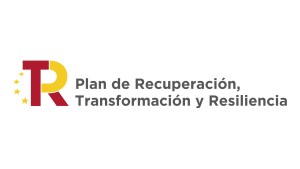Recently, a multicenter retrospective has been published in the American Journal of Transplantation in which six of the seven hospitals that perform lung transplantation in Spain have participated and which are the following: Vall d'Hebron (Barcelona), La Fe (Valencia) , Marqués de Valdecilla (Santander), Reina Sofía (Córdoba), Puerta de Hierro (Madrid), October 12 (Madrid), and A Coruña University Hospital (Coruña). The previous hospitals participated in this project except for the Reina Sofía Hospital in Córdoba.
The study collects retrospectively and a description was made of the data of the patients with lung transplantation in these six Spanish centers who have had SARS-CoV-2 (COVID-19) infection between 03/04/2020 and on 04/28/2020. A total of 44 patients with lung transplantation and COVID-19 were registered, of which 43 required hospital admission. All were diagnosed with CRP, 90.9% of them on the first attempt, and only 9.1% on the second attempt. The most frequent symptoms were fever (77%), dyspnea and cough (59%), and 73% of the patients had radiological alterations at the time of diagnosis.
93% of the patients received hydroxychloroquine. 31.8% received treatment with Lopinavir / Ritonavir, and as a complication, 71.4% of those who received Lopinavir / Ritonavir had increased levels of tacrolimus (the main immunosuppressant used), and as a consequence of this worsening of the renal function. 43.2% received treatment with Tociliziumab.
A high percentage of patients, up to 84%, required some type of additional respiratory support, and up to 30% of the patients required admission to the ICU or intermediate respiratory care units.
As of 04/28/2020 (end of recruitment), 38.6% of the patients had died. The patients with higher mortality had a worse respiratory function before the SARS-CoV-2 infection, and had greater radiological alterations, higher levels of inteleukin-6 and higher D-dimer values at the time of diagnosis than non-deceased patients.
In summary, the findings described suggest that lung transplant patients suffering from COVID-19 are very serious patients, with high rates of hospital admission, high need for respiratory support, high need for ICU admissions, as well as a high mortality rate, probably all favored by the high degree of immunosuppression of these patients.
These results are therefore especially important when assessing the severity of COVID-19 in lung transplant patients. On the other hand, regarding the specific treatments, it must be taken into account that the results are in the context of the care of patients with COVID-19 in the first wave (March and April), in which some therapies were used such as hydroxychloroquine and Lopinavir / Ritonavir, which are not currently used as scientific evidence has shown their lack of efficacy against COVID-19, so if the study is repeated today with other treatment regimens, they could be obtained somewhat different results.
Ref. COVID-19 in lung transplant recipients: A multicenter study. Am J Transplant. 2020 Oct 22. doi: 10.1111/ajt.16364. Online ahead of print. Berta Saez-Giménez 1, Cristina Berastegui 1, Miriam Barrecheguren, Eva Revilla-López, Ibai Los Arcos, Rodrigo Alonso, Myriam Aguilar, Víctor M Mora, Isabel Otero, Juan P Reig, Carlos A Quezada, Virginia Pérez, Manuel Valle, Rosalía Laporta, María Deu, Judith Sacanell, Carles Bravo, Joan Gavalda, Manuel Lopez-Meseguer, Víctor Monforte. PMID: 33089648 DOI: 10.1111/ajt.16364





















